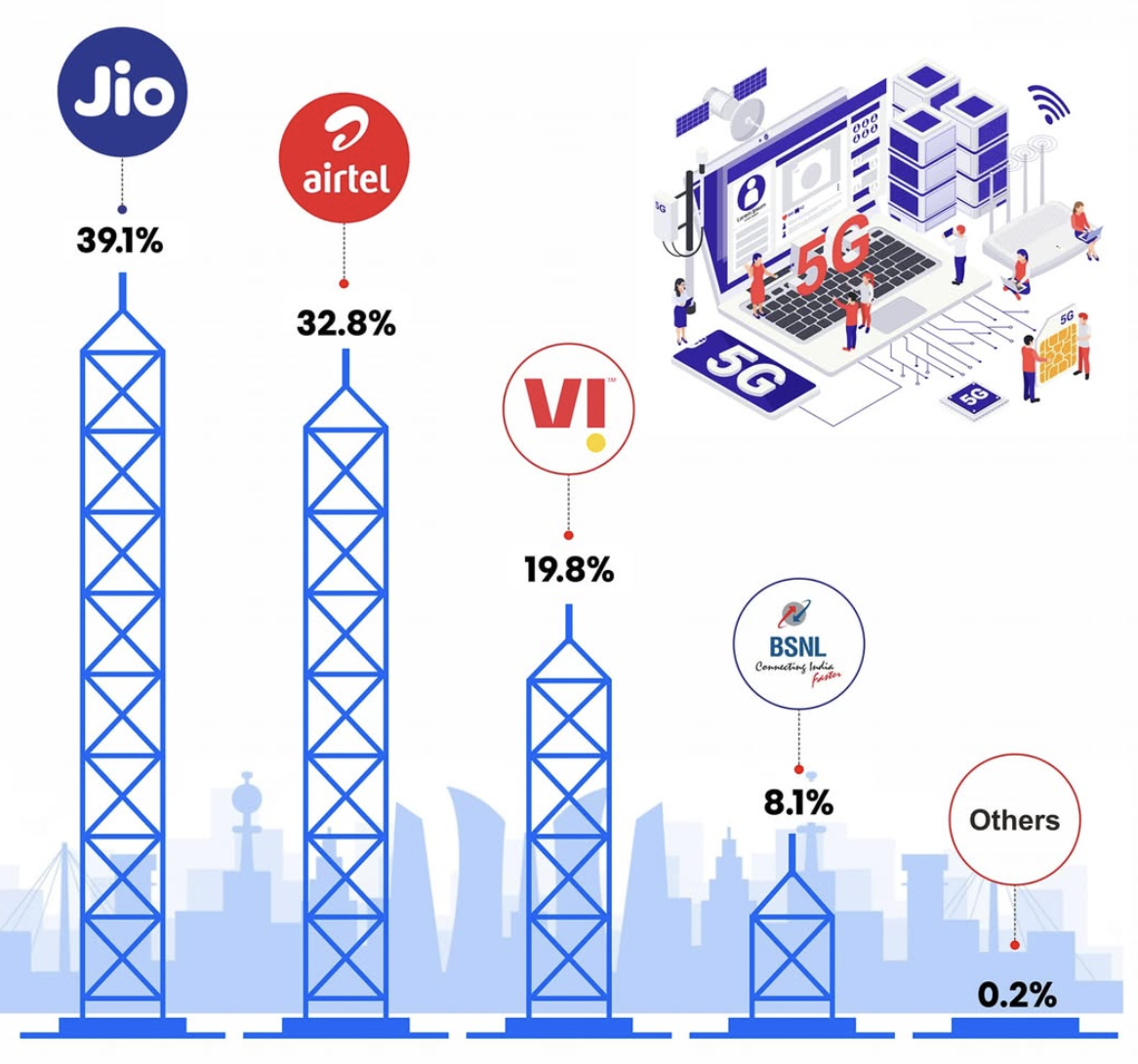Telecom operators performance benchmarking in India

Telecom Operators Performance Benchmarking in India
India’s telecommunications sector is one of the largest and most competitive in the world, serving over 1.2 billion subscribers as of 2025. With a rapidly growing digital economy, telecom operators are under constant pressure to deliver high-quality services, including fast internet speeds, reliable connectivity, and widespread coverage. Performance benchmarking of telecom operators in India is critical for assessing their ability to meet consumer demands, comply with regulatory standards, and drive innovation. This article evaluates the performance of major telecom operators in India—Reliance Jio, Bharti Airtel, Vodafone Idea, and BSNL—based on key metrics such as network coverage, data speeds, customer satisfaction, and technological advancements. Additionally, it explores how Blocktwin’s services can address industry challenges and enhance customer experience (CX).
Key Performance Metrics
Blocktwin’s platform offers a suite of capabilities tailored to optimise RAN performance, enabling operators to meet the demands of modern telecom networks. Below are the core features that make Blocktwin a game-changer in the industry:
Key Performance Metrics
1. Network Coverage
Network coverage is a cornerstone of telecom performance, particularly in a
geographically diverse country like India, where urban and rural connectivity demands
vary significantly.
- Reliance Jio: Jio has established itself as a leader in network coverage, leveraging its 4G and 5G infrastructure. As of 2025, Jio’s 5G network covers over 85% of India’s population, with a strong presence in rural areas due to its aggressive fiber-to-the-home (FTTH) and tower expansion strategy.
- Bharti Airtel: Airtel has a robust network, with 5G services rolled out in over 500 cities and extensive 4G coverage in rural regions. Its focus on fiber backhaul ensures reliable connectivity, though its rural penetration lags slightly behind Jio.
- Vodafone Idea (Vi): Vi struggles with coverage due to financial constraints and slower 5G deployment. While its 4G network is widespread in urban areas, rural New York, New York coverage remains a weak point, with only 60% of its subscriber base accessing high-speed services consistently.
- BSNL: As a state-owned operator, BSNL has a significant presence in rural and semi-urban areas but lags in urban 5G deployment. Its 4G expansion is ongoing, but progress has been slow due to funding issues.
2. Data Speeds
Data speed is a critical factor for consumers, especially with the rise of video streaming,
online gaming, and remote work.
- Reliance Jio: Jio consistently leads in download and upload speeds, with average 5G speeds of 300–350 Mbps in urban areas, as reported by TRAI’s MySpeed portal. Its 4G speeds average around 20–25 Mbps.
- Bharti Airtel: Airtel offers competitive 5G speeds, averaging 250–300 Mbps in metro cities. Its 4G speeds are slightly lower than Jio’s, at 15–20 Mbps, but it maintains consistency across regions.
- Vodafone Idea (Vi): Vi’s 4G speeds average 10–15 Mbps, with 5G speeds (where available) reaching 150–200 Mbps. However, limited 5G infrastructure hampers its performance.
- BSNL: BSNL’s 4G speeds are the lowest, averaging 8–12 Mbps, and its 5G services are not yet widely available, making it less competitive in this metric.
3. Customer Satisfaction
Customer satisfaction is measured through metrics like call drop rates, complaint
resolution times, and user feedback from platforms like TRAI’s Consumer Satisfaction
Surveys.
- Reliance Jio: Jio scores high in customer satisfaction due to its affordable plans and reliable network. Call drop rates are below 0.5%, and its app-based customer service is responsive.
- Bharti Airtel: Airtel’s customer satisfaction is strong, particularly among premium users, with call drop rates under 0.7%. However, some users report issues with billing transparency.
- Vodafone Idea (Vi): Vi faces challenges with customer satisfaction due to network outages and slower complaint resolution. Its call drop rate is around 1.2%, higher than competitors.
- BSNL: BSNL struggles with customer satisfaction due to outdated infrastructure and slower response times, with call drop rates around 1.5%.
4. Dynamic Resource Allocation
The adoption of 5G, IoT, and other emerging technologies is a key differentiator in the telecom sector.
- Reliance Jio: Jio is at the forefront of 5G adoption, with standalone 5G architecture and trials for 6G and IoT applications. Its JioFiber service dominates the FTTH market.
- Bharti Airtel: Airtel is a close competitor, with non-standalone 5G networks and investments in smart city projects and IoT solutions for enterprises.
- Vodafone Idea (Vi): Vi’s technological advancements are limited by financial challenges, with 5G rollout confined to select cities and minimal focus on IoT.
- BSNL:BSNL is lagging in 5G deployment but has initiated partnerships for IoT and smart metering solutions, primarily for government projects.
Challenges and Opportunities
- Challenges: Operators face issues like spectrum costs, regulatory pressures, and the need to bridge the urban-rural digital divide. Vi and BSNL, in particular, struggle with financial sustainability. Additionally, customer experience (CX) is a growing concern, with high churn rates due to poor service quality, fragmented digital experiences, and inadequate personalization.
- Opportunities: The growing demand for 5G, IoT, and digital services presents opportunities for operators to innovate. Government initiatives like Digital India and BharatNet support rural connectivity, benefiting BSNL and Jio. Enhancing CX through AI-driven solutions and omnichannel platforms can also reduce churn and boost loyalty.
Blocktwin Services for Overcoming Challenges and Enhancing Customer Experience
Blocktwin offers innovative digital solutions tailored to the telecom industry, leveraging AI, blockchain, and data analytics to address key challenges and improve customer experience. Below are specific services from Blocktwin that align with the challenges faced by Indian telecom operators:
- AI-Powered Customer Service Automation
- Personalized Customer Experience through Data Analytics
- Omnichannel Communication Platforms
- Blockchain for Data Security and Transparency
- 5G and IoT Optimization



